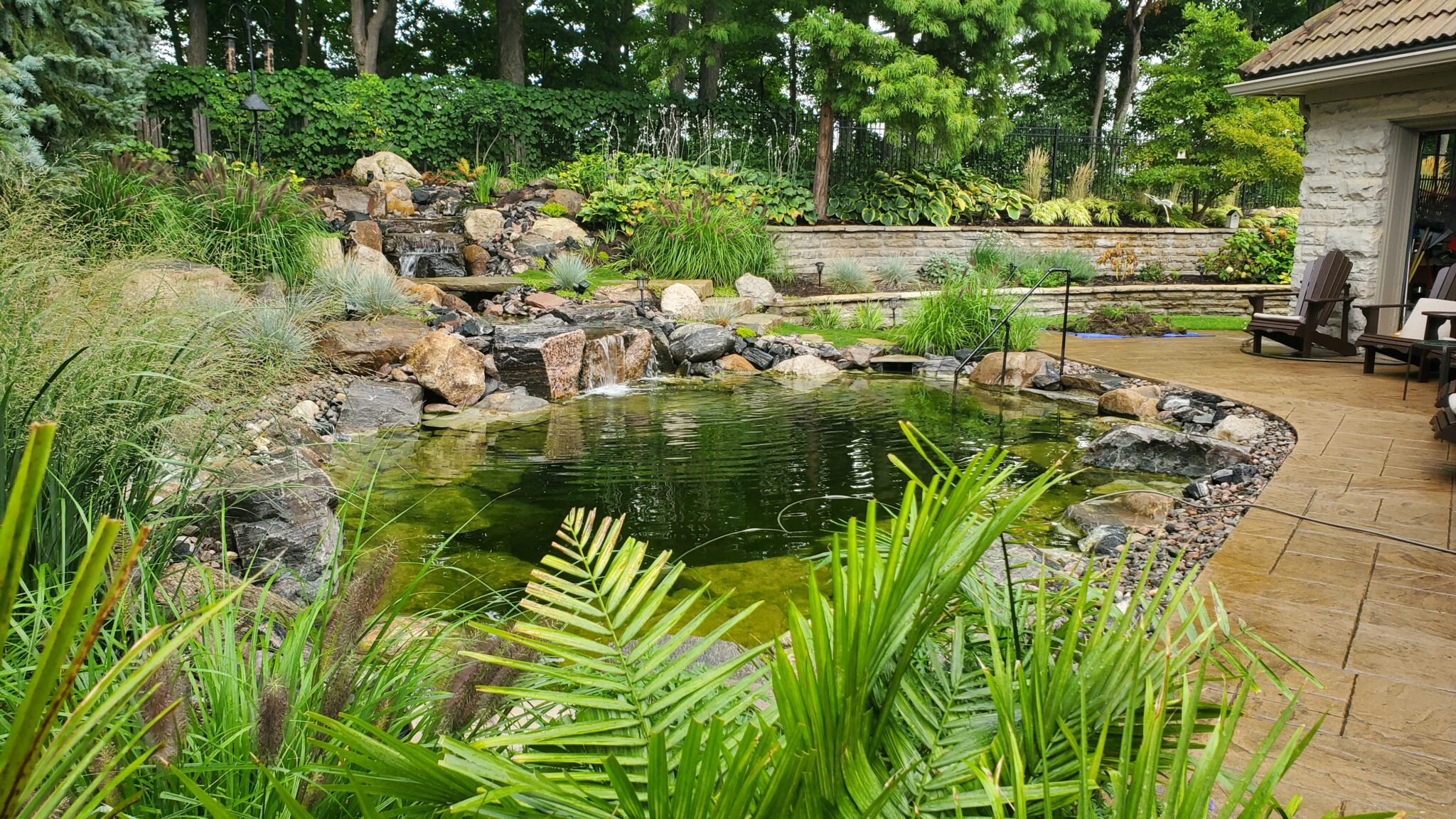What is a Natural Swimming Pool?

Imagine a garden pond filled with white and pink water lilies and purple irises and humming with a chorus of frogs and birds. Now imagine swimming in it.
Alice Klein and Hannah Hislop take a dip in the world of natural swimming pools for your landscape ( article from http://www.theecologist.org/)
Superficially, a natural swimming pool looks like a normal garden pond, but it actually consists of two zones: a deep, central swimming area, and a shallower ‘regeneration’ area where plants, specially chosen to purify the water and harbour wildlife, grow.
Ask most swimming pool contractors to build a backyard pool and chances are they’ll roll out a long list of materials, including reinforcing steel, cement, fibreglass, an energy-intensive filtration system and an arsenal of chemicals. In contrast, a natural swimming pool cleanses the water by organic means, using the purifying properties of plants. A small filter extracts surface debris such as leaves, and a pump keeps the water circulating sufficiently through the planted area. Building materials, including gravel, stone and clay, are chosen to enhance and blend the pool into the natural landscape.
Because about half of the pool’s space is devoted to aquatic plants, it is as much a garden feature in your landscape as a pool and can be admired year round without any need to cover it in tarpaulin at the end of summer. It changes constantly with the seasons and matures over the years, allowing the plants to grow into their habitat.
How do they work?
Natural swimming pools use the organic purifying properties of plants and micro-organisms to emulate the clean, clear water of ponds and lakes. The water is kept circulating slowly by differences in temperature in the shallower and deeper zones, and also by a small pump.
The regeneration area contains a number of aquatic and semi-aquatic plants such as bulrushes, irises and water lilies, which are planted in shingle or gravel with no topsoil, forcing the plants to extract their nutrients from the water instead. The water is cleaned biologically by the roots of aquatic plants that absorb decomposing materials, bacteria and pollutants and convert them into plant tissue. The leaves of aquatic plants absorb nutrients from the water, restricting the growth of algae.
The advantages of natural swimming pools
They do not use chemicals
The chemical-free water avoids the many health concerns associated with conventional pools, such as eye and skin irritations, cancer and respiratory problems.
They use less water
Natural pools don’t need constant emptying and refilling. Occasional top-up aside, they only need to be filled once. Filling and refilling conventional pools uses roughly 80 million litres of water in the UK every year.
They use less energy
A simple mechanical pump and filter passes warmer water from the regeneration area into the swimming area, while the black material lining the swimming area heats up quickly and retains warmth.
They provide a habitat for wildlife
The regeneration area attracts frogs, toads, dragonflies, damselflies, water boatmen and pond-skaters, which subsequently attract woodland and garden birds, which also drink and bathe in the water.
They are cheaper than conventional pools over their lifetime
Although construction costs may be higher than those of conventional pools, natural pool owners save significant amounts on maintenance costs as their pools do not require expensive filtration equipment and chemicals.
For more information feel free to call 519-632-5218 or email us at info@quietnature,ca
